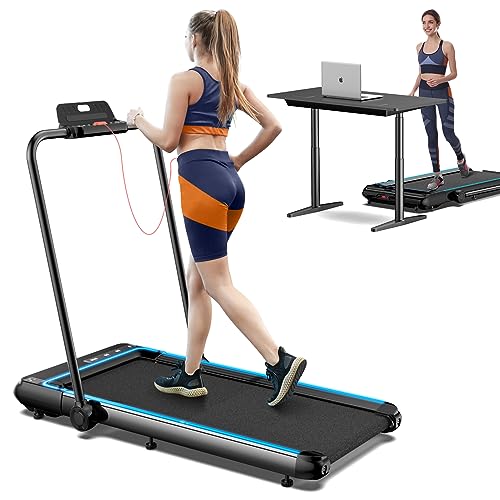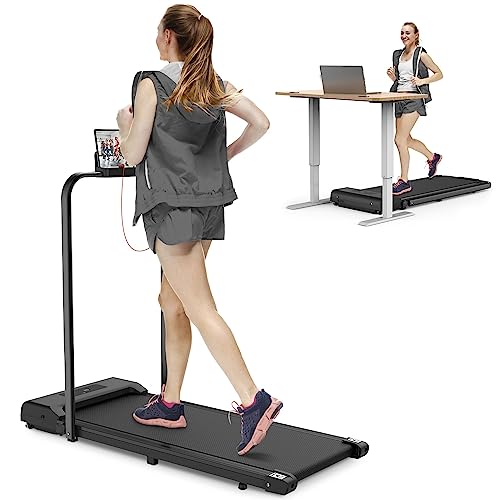
Non Powered Treadmill
Add a review FollowOverview
-
Founded Date March 16, 1965
-
Posted Jobs 0
-
Viewed 2
Company Description
10 Meetups On Non Folding Treadmill You Should Attend
Non-Folding Treadmills: The Ultimate Guide for Fitness Enthusiasts
As home fitness continues to get traction, lots of people are seeking equipment that satisfies their requirements without compromising quality or performance. One key gamer in this arena is the non-folding treadmill. Unlike folding treadmills, which are designed for compactness and portability, non-folding treadmills are typically more robust, offering boosted sturdiness and machine efficiency. This guide will check out the features, benefits, restrictions, and alternatives available for non-folding treadmills.
What is a Non-Folding Treadmill?
A non-folding Treadmill Manual [https://timeoftheworld.Date] is a stationary workout machine that does not have the capability to fold its deck for storage. Specifically developed to be a permanent fixture in physical fitness areas, these treadmills generally have a bigger footprint, permitting a host of comfy functions matched for serious runners and gym-goers.

Advantages of Non-Folding Treadmills
-
Stability and Durability: Non-folding treadmills normally have a tougher building, providing enhanced stability throughout high-intensity exercises. They are built to handle diverse user weights and running speeds, which can prolong their lifespan.
-
Advanced Features: Many non-folding models come equipped with sophisticated technological functions, such as clever display systems, automated incline modifications, and pre-set workout programs, which deal with serious physical fitness enthusiasts.
-
Larger Running Surface: These treadmills typically supply a wider and longer running area, which can be particularly beneficial for runners who prefer to train at higher speeds or for those with longer strides.
-
Better Motor Performance: Non-folding treadmills usually have more effective motors compared to their folding counterparts, enabling better performance throughout extreme running sessions.
Drawbacks of Non-Folding Treadmills
-
Space Requirements: Since they do not fold, non-folding treadmills need more space in your home or gym. If area is a restriction, this might be a crucial factor to consider.
-
Lack of Portability: These makers can be cumbersome to move. It is challenging to relocate a non-folding Treadmill Non Electric compared to a folding one, which may be a drawback for those who move frequently or reorganize home gym layouts frequently.
-
Price: Non-folding treadmills are usually more costly than folding treadmills, mainly due to their sophisticated functions and resilient construct.
Secret Features to Consider
When searching for the best non-folding treadmill, a number of functions must be considered to ensure you make an informed decision:
| Feature | Importance |
|---|---|
| Motor Power | Look for a motor of a minimum of 2.5 CHP for strong efficiency. |
| Belt Size | A belt width of 20 inches or wider is ideal for convenience and security. |
| Incline Range | An incline of 10% to 15% gives more exercise variety. |
| Technology Integration | Consider models with Bluetooth capabilities, workout apps, and heart rate tracking. |
| Guarantee | A robust service warranty (at least 10 years for the frame and motor) suggests toughness. |
Top Non-Folding Treadmills on the Market
Here is a thorough introduction of a few of the leading non-folding treadmills currently offered:
| Self Propelled Treadmill Model | Motor Power (CHP) | Running Surface (inches) | Incline (%) | Price Range (GBP) | Warranty |
|---|---|---|---|---|---|
| NordicTrack Commercial 1750 | 3.75 | 22 x 60 | 15 | ₤ 1,799 – ₤ 2,199 | 10-Year Frame, 2-Year Parts |
| Sole F85 | 3.5 | 22 x 60 | 15 | ₤ 1,699 – ₤ 2,099 | Lifetime Frame, 5-Year Parts |
| Life-span TR3000i | 2.5 | 20 x 56 | 15 | ₤ 999 – ₤ 1,299 | Life Time Frame, 5-Year Parts |
| ProForm Pro9000 | 3.0 | 22 x 60 | 15 | ₤ 1,499 – ₤ 2,299 | Lifetime Frame, 2-Year Parts |
| Horizon Treadmill 7.0 AT | 3.0 | 20 x 60 | 12 | ₤ 899 – ₤ 1,099 | Life Time Frame, 1-Year Parts |
Frequently Asked Questions About Non-Folding Treadmills
1. Are non-folding treadmills better than folding ones?Non -folding treadmills normally offer much better stability, durability, and advanced functions. This makes them ideal for major runners, but it eventually depends upon individual needs and offered space.
2. Can a non-folding Manual Treadmill For Walking be used for walking?Yes! Non-folding treadmills are not limited to running; they can also be ideal for walking and can accommodate a large range of fitness levels. 3. How much area do I require for a non-folding treadmill?It is suggested to have a devoted location measuring at least 7 feet long and 3 feet wide around the treadmill for safe usage. 4. Is it possible to transport a non-folding treadmill?While it can be done, it may need additional effort as they are normally heavierand bulkier than folding models. 5. What’s the average life expectancy
of a non-folding treadmill?With regular maintenance and proper usage, non-folding treadmills can last between 10 and 15 years or more.

Non-folding treadmills represent a considerable financial investment
for those severe about preserving or improving their health and wellness. With their emphasis on durability, stability,
and enhanced features, they deal with users pursuing efficiency and durability. Choosing the right model involves thoroughly considering your exercise habits, area availability, and budget plan. By comprehending the characteristics that make non-folding treadmills an exceptional alternative, people can make educated decisions that will enhance their home fitness experience. Whether it’s for Manual Walking Pad, running, or high-intensity training, the right non-folding treadmill can be a substantial ally in attaining fitness goals.
